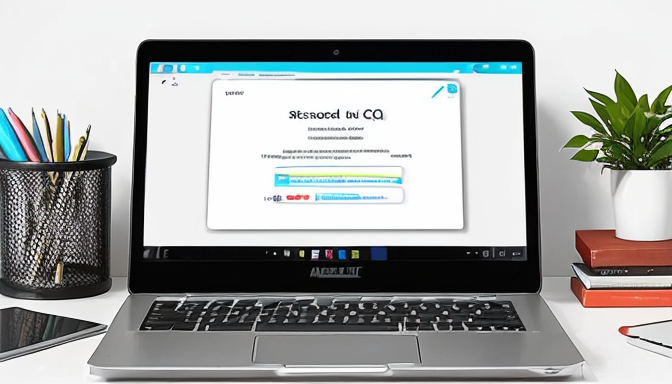In today’s hyper-connected world, safeguarding your digital life has never been more crucial. With the rise of cyber threats lurking around every corner, it’s essential to arm yourself with the right knowledge and tools. Imagine walking through a bustling city filled with potential dangers; you wouldn’t stroll through without a map or a plan, right? Similarly, navigating the online landscape requires strategies to protect your personal information and maintain your privacy.
As we dive into 2023, staying updated on the latest cybersecurity threats is paramount. Cybercriminals are constantly evolving their tactics, employing sophisticated methods like phishing, malware, and ransomware to exploit unsuspecting users. Understanding these threats is your first line of defense. For instance, phishing scams often masquerade as legitimate emails or messages, tricking you into revealing sensitive information. By learning to spot the red flags, such as suspicious links or unexpected requests for personal data, you can significantly reduce your risk of falling victim.
Moreover, adopting best practices for online security is essential. Simple yet effective measures include using strong passwords, enabling two-factor authentication, and regularly updating your software. Think of these practices as the locks and alarms on your digital home. The more secure you make your online presence, the less appealing you become to cybercriminals. Remember, your digital safety is in your hands, and with the right knowledge, you can navigate the internet confidently and securely.
Understanding Cyber Threats
In the vast ocean of the internet, navigating safely can feel like sailing through treacherous waters filled with lurking dangers. Cyber threats are becoming increasingly sophisticated, and understanding them is your first line of defense. From phishing attacks that trick you into revealing personal information to malware that can hijack your devices, the risks are real and ever-present. Have you ever received an email that seemed too good to be true? That’s phishing at work—an attempt to bait you into giving up sensitive data.
But it’s not just about recognizing these threats; it’s about knowing how to protect yourself. For instance, ransomware can lock you out of your own files until you pay a hefty sum. Imagine working on a project for weeks, only to find it inaccessible because of a malicious attack. It’s like losing your house keys, but instead, someone’s holding your entire digital life hostage!
To enhance your awareness, let’s break down some common threats:
- Phishing: Fake emails or messages that appear legitimate.
- Malware: Software designed to disrupt or gain unauthorized access.
- Ransomware: A type of malware that demands payment for file access.
Staying updated on cybersecurity threats and employing the right tools is essential. By arming yourself with knowledge, you can navigate the digital world with confidence, ensuring your online experience is not just safer but also more enjoyable. Remember, a well-informed user is a secure user!

Best Practices for Online Security
In today’s digital landscape, where threats lurk behind every click, staying safe online is more crucial than ever. So, how can you shield yourself from these lurking dangers? One of the most effective strategies is to use strong, unique passwords for each of your accounts. Think of your password as the key to your digital home; if it’s weak, intruders can easily break in. A password manager can help you generate and store complex passwords without the headache of remembering them all.
Another layer of protection is two-factor authentication (2FA). This is like having a security guard at the door of your digital life. Even if someone manages to steal your password, they won’t get through without that second verification step. It’s a simple yet powerful way to add an extra layer of security.
Moreover, keeping your software updated is vital. Cybercriminals often exploit vulnerabilities in outdated software, so make it a habit to install updates regularly. This includes everything from your operating system to apps on your smartphone. Think of it as maintaining a car; regular check-ups keep it running smoothly and safely.
Lastly, be cautious with your personal information. Sharing too much online can lead to identity theft. Always ask yourself, “Is this information necessary to share?” If not, keep it private! By following these best practices, you can significantly enhance your online security and enjoy a safer digital experience.
Frequently Asked Questions
- What are the most common cyber threats I should be aware of?
In today’s digital landscape, the most common cyber threats include phishing, where attackers trick you into revealing personal information, malware, which can infect your devices, and ransomware, where your files are held hostage for payment. Staying informed about these threats is your first line of defense!
- How can I create a strong password?
Creating a strong password is like building a fortress around your online accounts. Aim for at least 12 characters, mix upper and lower case letters, numbers, and special symbols. Avoid using easily guessable information like birthdays or names. Consider using a password manager to keep track of all your unique passwords!
- Is two-factor authentication really necessary?
Absolutely! Think of two-factor authentication (2FA) as a second lock on your door. Even if someone manages to get your password, they would still need that second piece of information to access your account. It adds an extra layer of security that can significantly reduce the risk of unauthorized access.
- How often should I update my software?
Regular updates are crucial! Aim to update your software at least once a month or whenever a new security patch is released. These updates often fix vulnerabilities that cybercriminals could exploit, keeping your digital life much safer.